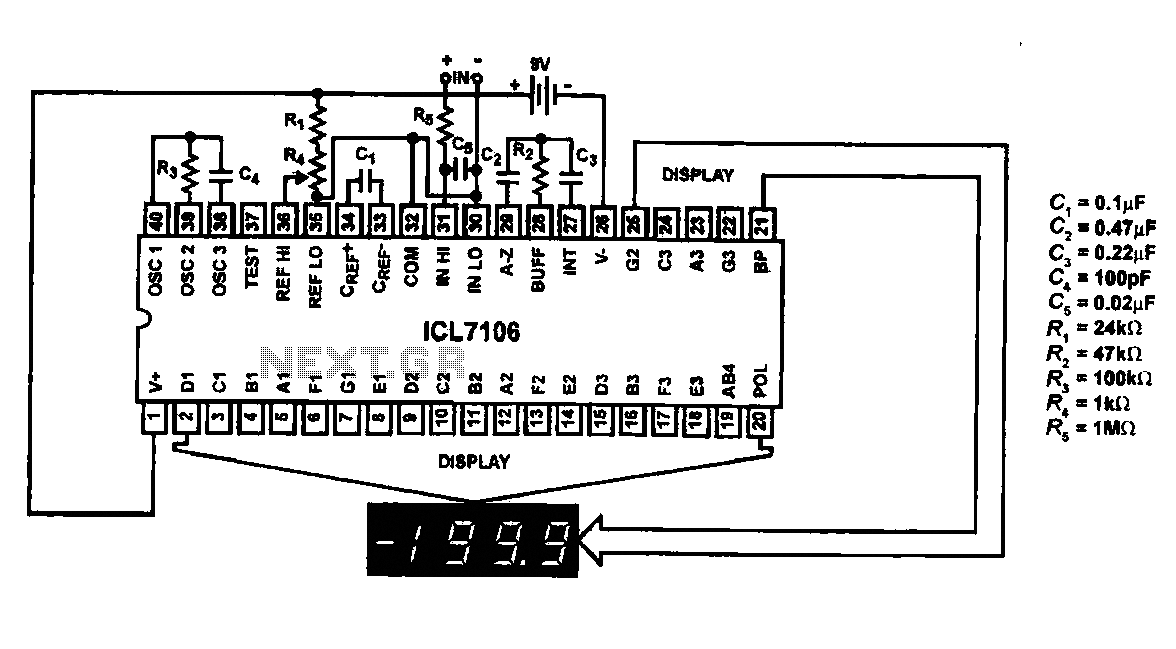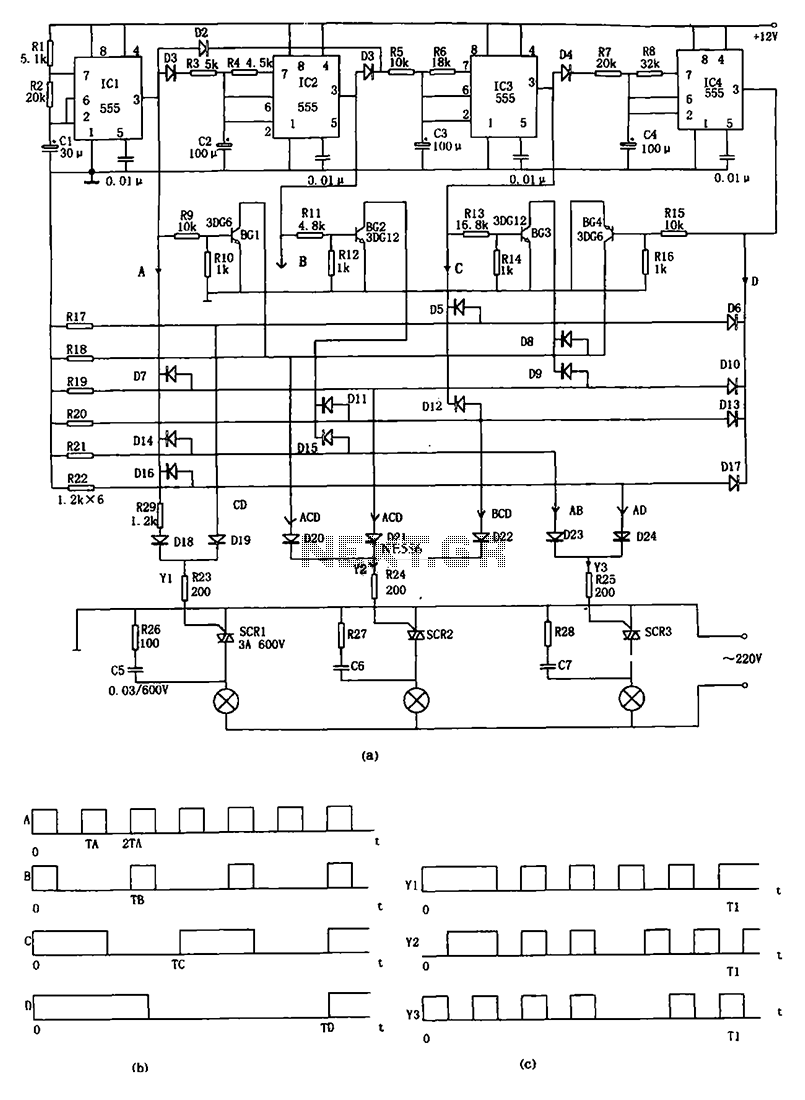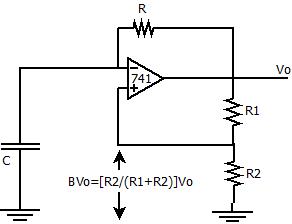
Using ICL7106-ICL7107 chip liquid crystal display circuit

This circuit utilizes the ICL7106 / ICL7107 chip to drive a liquid crystal display (LCD). In this configuration, the ICL7106 / ICL7107 functions as a signal measurement and analog-to-digital (A/D) converter. It detects an analog input signal, amplifies it, and then presents the measurement results on a digital display.
The ICL7106 and ICL7107 are integrated circuits designed for high-precision analog-to-digital conversion. They are commonly used in applications that require accurate measurement of voltage levels, such as digital voltmeters and other instrumentation. The operation begins with the analog input signal being fed into the A/D converter. The chip samples the input and converts it into a digital format through a process called successive approximation.
The output of the conversion is then sent to the liquid crystal display. The ICL7106/7107 is capable of driving a 3.5-digit display, which allows it to show values from 0 to 1999. The display typically requires a few additional components to function correctly, including resistors for setting the reference voltage and capacitors for stabilization.
In this circuit, a stable voltage reference is crucial for accurate measurements. A common approach is to use a voltage reference IC, which provides a precise voltage level that the A/D converter can use as a baseline for converting the analog signal. Additionally, filtering capacitors are often included in the design to minimize noise and ensure a clean signal is presented to the converter.
The circuit may also incorporate a microcontroller or additional logic to manage the display and handle user inputs, such as selecting measurement ranges or initiating calibration procedures. Overall, the ICL7106/7107-based circuit offers a reliable solution for converting analog signals into a readable digital format, making it suitable for various electronic measurement applications.It shows using ICL7106 / ICL7107 chip liquid crystal display circuit. In this circuit, ICL7106 / 7107 is a signal measurement and A / D converter circuit, an analog input signal by detecting it, amplified to the digital display circuit, the result of the measurement with digital display.
The ICL7106 and ICL7107 are integrated circuits designed for high-precision analog-to-digital conversion. They are commonly used in applications that require accurate measurement of voltage levels, such as digital voltmeters and other instrumentation. The operation begins with the analog input signal being fed into the A/D converter. The chip samples the input and converts it into a digital format through a process called successive approximation.
The output of the conversion is then sent to the liquid crystal display. The ICL7106/7107 is capable of driving a 3.5-digit display, which allows it to show values from 0 to 1999. The display typically requires a few additional components to function correctly, including resistors for setting the reference voltage and capacitors for stabilization.
In this circuit, a stable voltage reference is crucial for accurate measurements. A common approach is to use a voltage reference IC, which provides a precise voltage level that the A/D converter can use as a baseline for converting the analog signal. Additionally, filtering capacitors are often included in the design to minimize noise and ensure a clean signal is presented to the converter.
The circuit may also incorporate a microcontroller or additional logic to manage the display and handle user inputs, such as selecting measurement ranges or initiating calibration procedures. Overall, the ICL7106/7107-based circuit offers a reliable solution for converting analog signals into a readable digital format, making it suitable for various electronic measurement applications.It shows using ICL7106 / ICL7107 chip liquid crystal display circuit. In this circuit, ICL7106 / 7107 is a signal measurement and A / D converter circuit, an analog input signal by detecting it, amplified to the digital display circuit, the result of the measurement with digital display.





